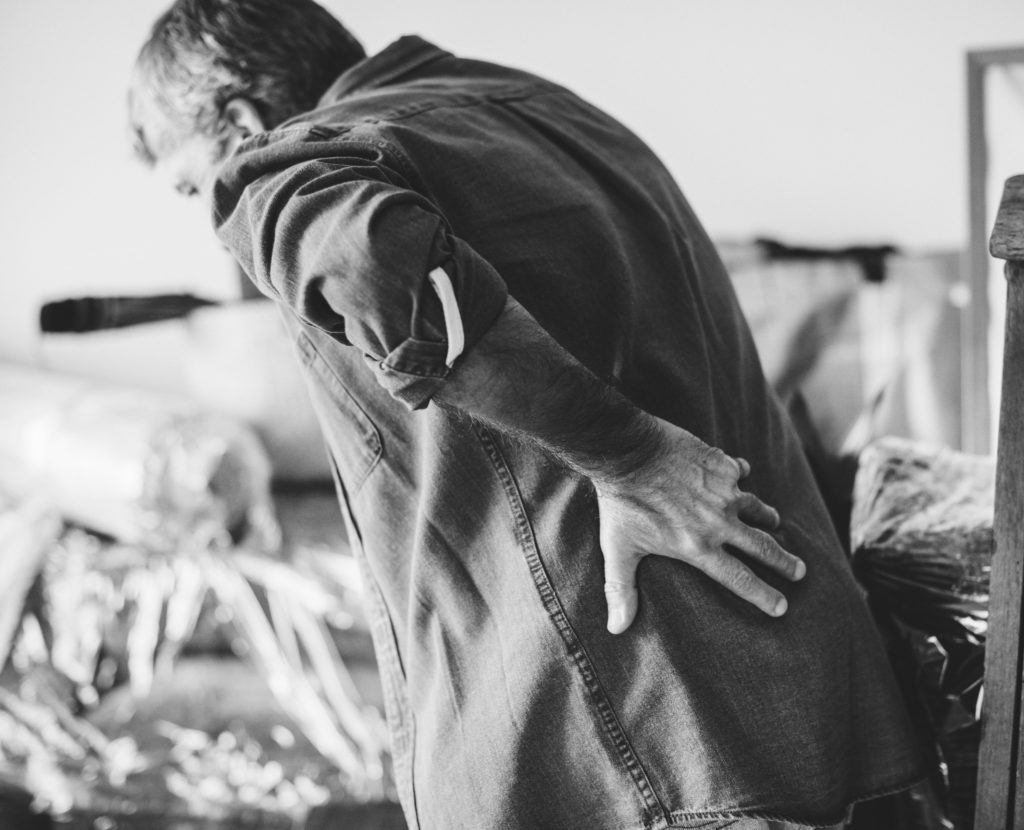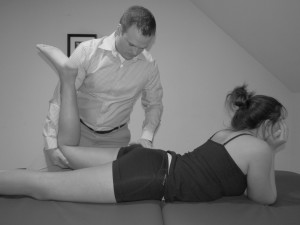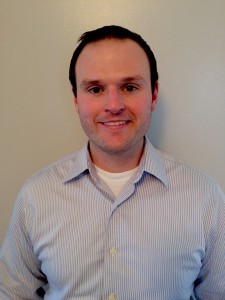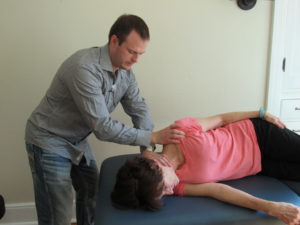 Have you ever had low back pain, hip pain, glute pain that just will not go away? Maybe traditional physical therapy has not helped or you have tried chiropractic care with only mild success. You doctor gives you muscle relaxers and maybe even steroids, but the pain continues to be present. Low back pain can be very hard to treat because of the complexity of the spine and the neuromuscular system interaction that occurs to create the pain. Sometimes the treating practitioner needs to look further into the body for the cause of the pain than just thinking of the lumbar spine.
Have you ever had low back pain, hip pain, glute pain that just will not go away? Maybe traditional physical therapy has not helped or you have tried chiropractic care with only mild success. You doctor gives you muscle relaxers and maybe even steroids, but the pain continues to be present. Low back pain can be very hard to treat because of the complexity of the spine and the neuromuscular system interaction that occurs to create the pain. Sometimes the treating practitioner needs to look further into the body for the cause of the pain than just thinking of the lumbar spine.
Chronic low back pain is often a combination of lumbar dysfunction along with pelvic girdle dysfunction. The pelvic girdle involves iliosacral movement, which is how the ilium of the pelvis moves around the sacrum (tailbone), and sacroilial movement, which is how the sacrum moves in the ilium. When the mechanics of either are abnormal, low back pain often occurs along with other pelvic disorders. Dr. Greenman, author of Greenman’s Principles of Manual Medicine, found in his research that people that have chronic low back pain have some common dysfunctions present. He termed these dysfunctions the “Dirty Half Dozen” because there were 6 problems people had in the lumbar spine and pelvic girdle. The problems/dysfunctions that were present included pelvic girdle dysfunctions such as upslip/downslip, pubis symphysis malpositioning, abnormal anterior movement of the sacrum, along with lumbar spine FRS dysfunctions, a shortened leg, and muscle imbalance. Finding and treating the “Dirty Half Dozen” can help reduce pain significantly, but the problem is finding someone to do that.
First you must know what to look for when treating low back pain effectively, so segmental diagnosis is crucial. Segmental diagnosis is basically figuring out which of the “Dirty Half Dozen” are present in the lumbar spine and pelvic girdle. Once the dysfunctions are found, OMT and MET can be easily used to correct the underlying problem and then appropriate exercises can be given to work on the muscle imbalances. At Wright Physiotherapy, I have been trained in segmental diagnosis and how to use OMT and MET to treat out the underlying problem. This has made me very effective in helping people with low back pain, hip pain, and glute pain that just won’t go away. Usually significant changes occur in just a couple of visits. Pain reduction can be life changing!
 Over the weekend I had a continuing education course for physical therapy to continue my license. The course dealt with using manual therapy, specifically muscle energy technique (MET), to correct problems of the pelvic girdle, sacrum, and lumbar spine. I have taken many courses over the years to learn my specialty of MET and I am very partial to the courses and education provided by Michigan State’s Osteopathic medical school and their manual medicine series. Michigan state has given me the knowledge and skill to treat my physical therapy clients outside of insurance, because of the great outcomes I get. The course I took was not a Michigan State course but it did provide a great review of the knowledge I already have along with reminding me how powerful MET is. Using physical therapy and MET is how I get such great outcomes far and above the norms and is why I can be an independent practitioner and not have to deal with insurance.
Over the weekend I had a continuing education course for physical therapy to continue my license. The course dealt with using manual therapy, specifically muscle energy technique (MET), to correct problems of the pelvic girdle, sacrum, and lumbar spine. I have taken many courses over the years to learn my specialty of MET and I am very partial to the courses and education provided by Michigan State’s Osteopathic medical school and their manual medicine series. Michigan state has given me the knowledge and skill to treat my physical therapy clients outside of insurance, because of the great outcomes I get. The course I took was not a Michigan State course but it did provide a great review of the knowledge I already have along with reminding me how powerful MET is. Using physical therapy and MET is how I get such great outcomes far and above the norms and is why I can be an independent practitioner and not have to deal with insurance. Low back surgery is not something you should take lightly and one should understand what back surgery is trying to accomplish.
Low back surgery is not something you should take lightly and one should understand what back surgery is trying to accomplish. Are you looking for physical therapy or a physical therapist in Newark, Granville, or Pataskala, OH? If you answered yes to this, then you have come to the right place. Dr. Dan Wright is a Doctor of Physical Therapy and a physical therapist in the Newark, Granville, and Pataskala, OH area. He is a specialist in relieving pain and improving movement problems, and he can help you return to the activities you enjoy. Call us today to schedule an appointment 740-707-0354 or to answer any questions you may have. Thank you.
Are you looking for physical therapy or a physical therapist in Newark, Granville, or Pataskala, OH? If you answered yes to this, then you have come to the right place. Dr. Dan Wright is a Doctor of Physical Therapy and a physical therapist in the Newark, Granville, and Pataskala, OH area. He is a specialist in relieving pain and improving movement problems, and he can help you return to the activities you enjoy. Call us today to schedule an appointment 740-707-0354 or to answer any questions you may have. Thank you.


